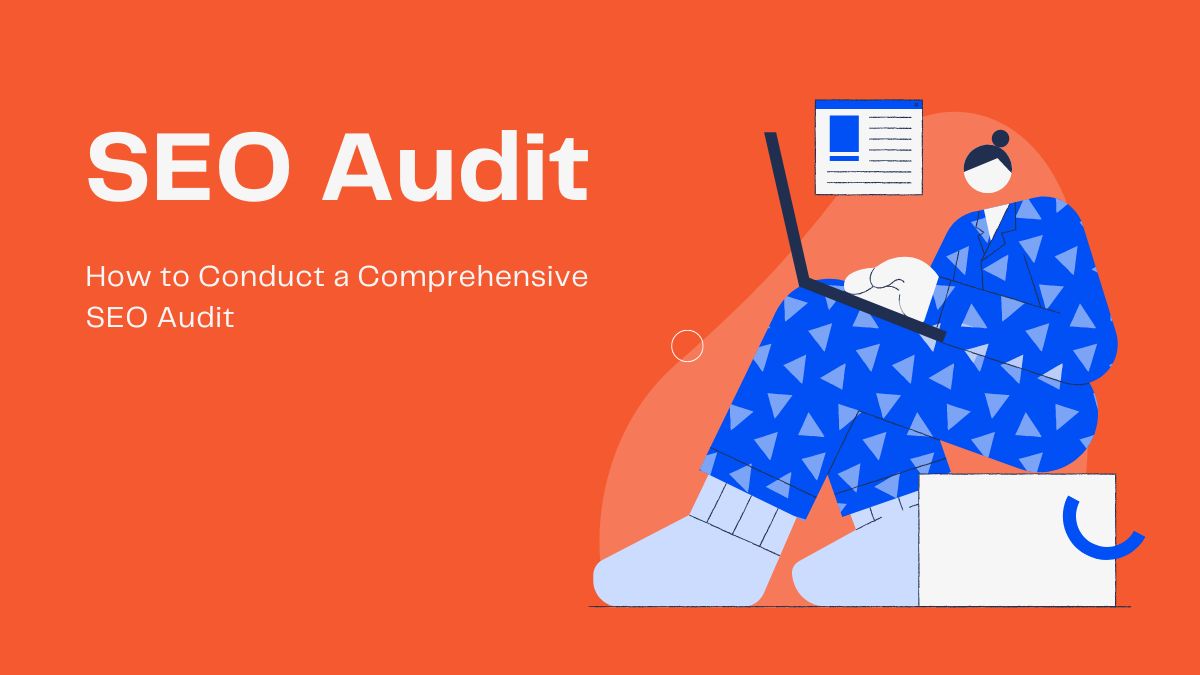
In today’s digital world, having a strong online presence is key to business success. A thorough SEO audit is essential. It ensures your site is optimized for hunting machines. This improves your search rankings and drives organic business. This companion will walk you through the process of conducting a thorough SEO audit.
What is an SEO Audit?
An SEO audit assesses your website’s performance for search engine optimization. It involves testing the color of your website. This is to find issues that hurt your search rankings. An SEO audit helps you understand your site’s strengths and weaknesses. It provides practical ideas for improvement.
Why is an SEO Audit Important?
Conducting regular SEO checkups is important because it helps you:
- Identify technical issues that may be hindering your site’s performance.
- Optimize your content and improve user experience.
- Stay up-to-date with the latest SEO best practices.
- Enhance your site’s visibility in search engine results pages (SERPs).
- Increase organic traffic and drive more conversions.
Steps to Conduct a Comprehensive SEO Audit
1. Crawl Your Website
The first step in an SEO audit is to crawl your website. This involves using tools like Screaming Frog, SEMrush, or Ahrefs to overlook your entire point and identify issues. A website bottleneck helps you gather data on colorful parts. These include broken links, indistinguishable content, missing meta markers, and more.
Tools for Website Crawling
- Screaming Frog
- SEMrush Site Audit
- Ahrefs Site Audit
2. Check for Indexing Issues
ensure that all important runners on your website are listed by hunt machines. Use the Google Search Console to check the indexing status of your point. Look for issues like
- Pages that are not indexed.
- Pages with crawl errors.
- Sitemap submission status.
To check your site’s indexing status, enter site:yourdomain.com in the Google search bar. This will show the pages that are indexed by Google.
3. Analyze On-Page SEO Elements
On-page SEO elements play a crucial role in your website’s performance. Review the following components:
a. Meta Titles and Descriptions:
- Ensure each page has a unique and descriptive meta title.
- Meta descriptions should be compelling and include relevant keywords.
b. Header Tags:
- Use header tags (H1, H2, H3, etc.) to structure your content.
- Ensure there is only one H1 tag per page and it includes the main keyword.
c. URL Structure:
- URLs should be clean, descriptive, and include relevant keywords.
- Avoid long and complex URLs.
d. Content Quality:
- Ensure your content is valuable, informative, and relevant to your audience.
- Check for duplicate content and remove or consolidate it.
- Update outdated content to keep it fresh.
4. Evaluate Technical SEO Factors
Technical SEO is the backbone of your website’s performance. Assess the following technical elements:
a. Site Speed:
- Use tools like Google PageSpeed Insights and GTmetrix to measure your site’s loading speed.
- Optimize images, leverage browser caching, and minimize JavaScript and CSS files to improve speed.
b. Mobile-Friendliness:
- Ensure your website is responsive and provides a good user experience on mobile devices.
- Use Google’s Mobile-Friendly Test to check your site’s mobile compatibility.
c. XML Sitemap:
- Ensure your XML sitemap is up-to-date and submitted to search engines.
- Include only the important pages in your sitemap.
d. Robots.txt File:
- Check your robots.txt file to ensure it’s not blocking important pages from being crawled.
- Allow search engines to access your CSS and JavaScript files.
5. Assess Off-Page SEO Factors
Off-page SEO factors, such as backlinks, significantly impact your search engine rankings. Evaluate the following:
a. Backlink Profile:
- Use tools like Ahrefs, Moz, or SEMrush to analyze your backlink profile.
- Identify and disavow toxic or low-quality backlinks.
- Focus on building high-quality, relevant backlinks from authoritative sites.
b. Social Signals:
- Monitor social media mentions and shares.
- Encourage social engagement and shareability of your content.
6. Analyze User Experience (UX)
User experience is a critical factor for SEO. Ensure your website provides a seamless and enjoyable experience for users:
a. Navigation:
- Ensure your site has a clear and intuitive navigation structure.
- Make it easy for users to find the information they need.
b. Design and Layout:
- Use a clean and attractive design that enhances user engagement.
- Ensure your site is accessible and usable for all users, including those with disabilities.
c. Content Readability:
- Use readable fonts and appropriate font sizes.
- Break content into smaller paragraphs and use bullet points for easy reading.
7. Review and Optimize Local SEO
If your business has a local presence, optimizing for local SEO is crucial:
a. Google My Business:
- Claim and optimize your Google My Business listing.
- Ensure your business information is accurate and up-to-date.
b. Local Citations:
- Ensure your business is listed on relevant local directories.
- Maintain consistency in your business name, address, and phone number (NAP) across all listings.
c. Reviews:
- Encourage satisfied customers to leave positive reviews on Google and other review sites.
- Respond to reviews to engage with your audience and build trust.
8. Monitor Analytics and Performance
Regularly monitor your website’s performance using tools like Google Analytics and Google Search Console. Track the following metrics:
- Organic traffic.
- Bounce rate.
- Average session duration.
- Conversion rate.
- Keyword rankings.
Use these insights to identify areas for improvement and measure the effectiveness of your SEO efforts.
Conclusion
Conducting a comprehensive SEO audit is essential for maintaining and improving your website’s performance in search engine results. By following the steps outlined in this guide, you can identify and address issues, optimize your site for better visibility, and ultimately drive more organic traffic. Regular SEO audits will help you stay ahead of the competition and ensure your site remains in top shape.
Remember, SEO is an ongoing process. Continuously monitor, analyze, and optimize your site to keep up with changing algorithms and user behavior. By doing so, you’ll be well on your way to achieving long-term SEO success.




